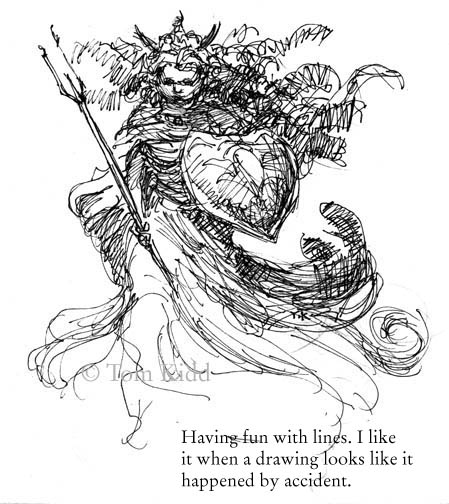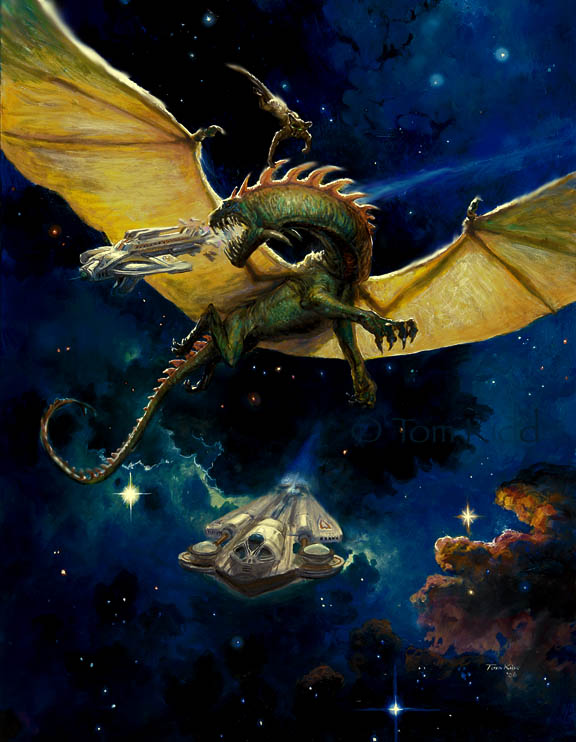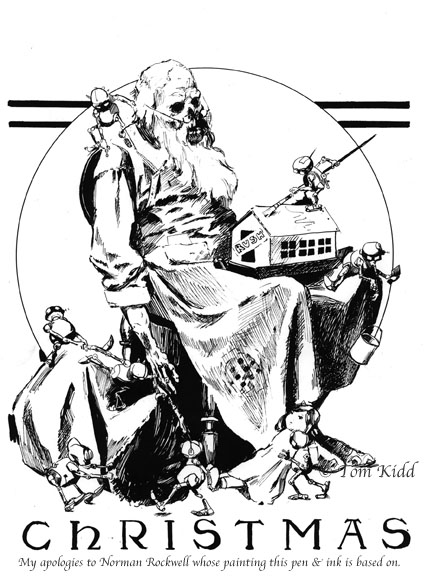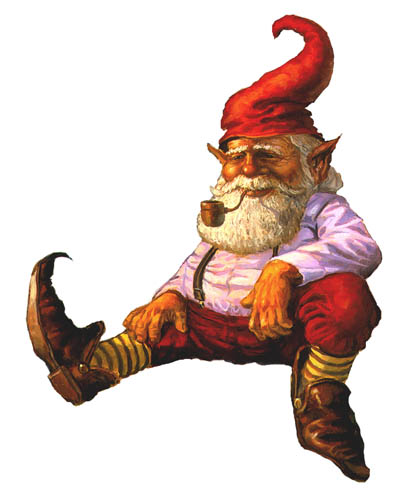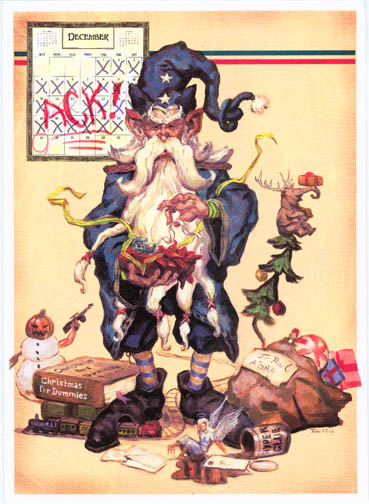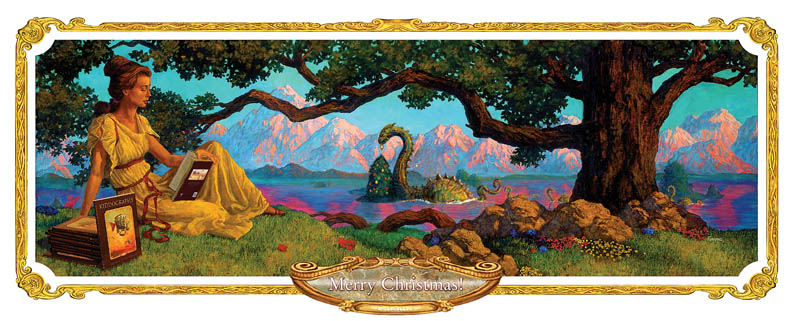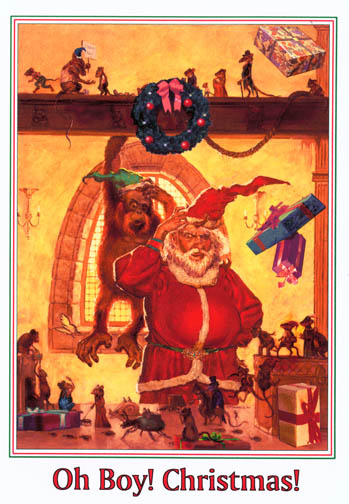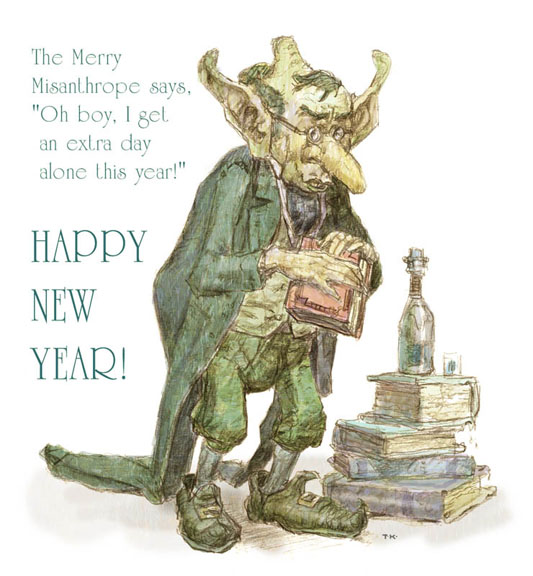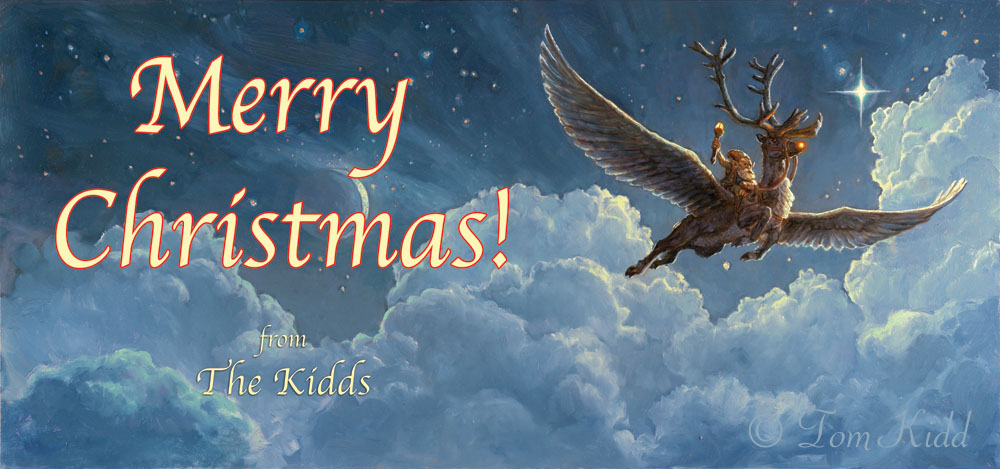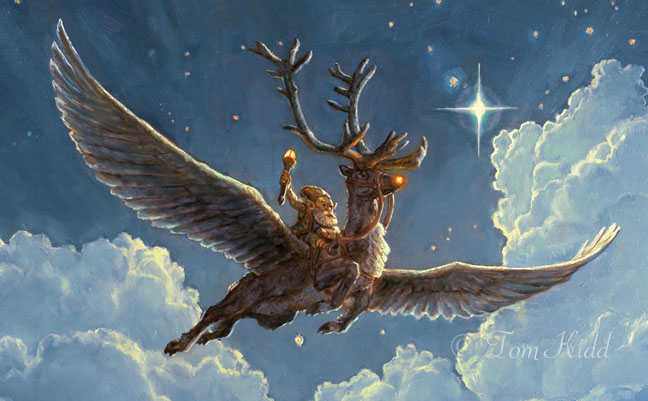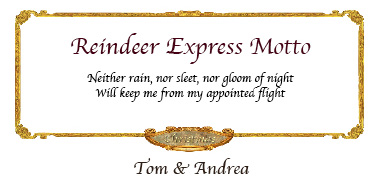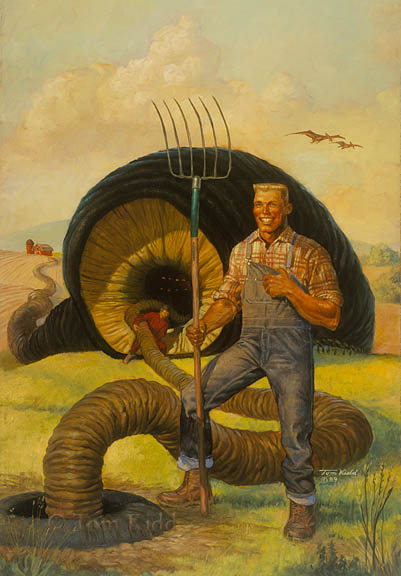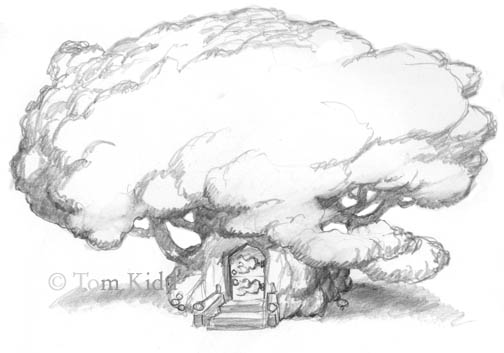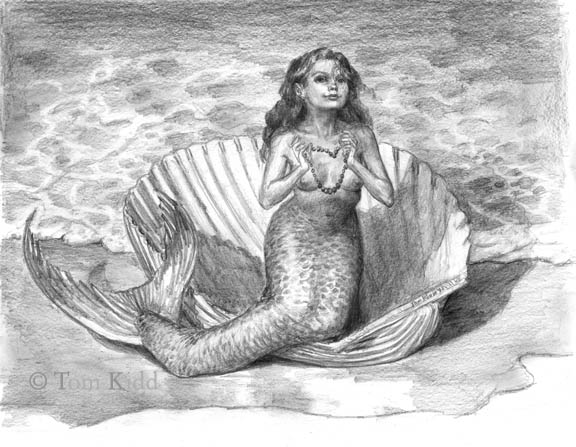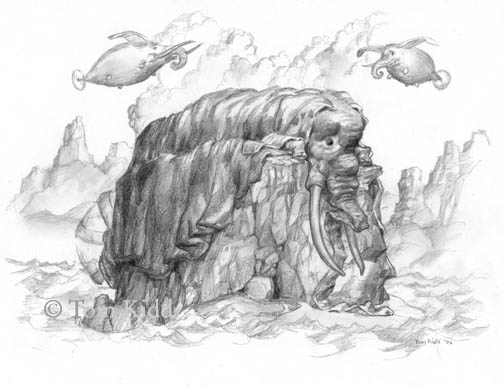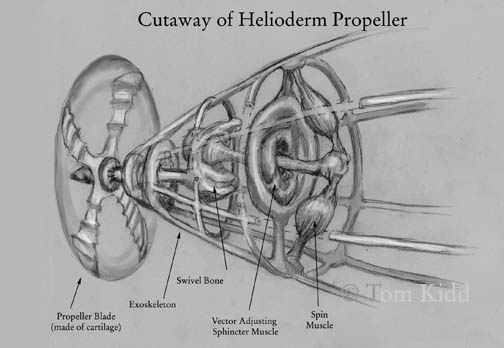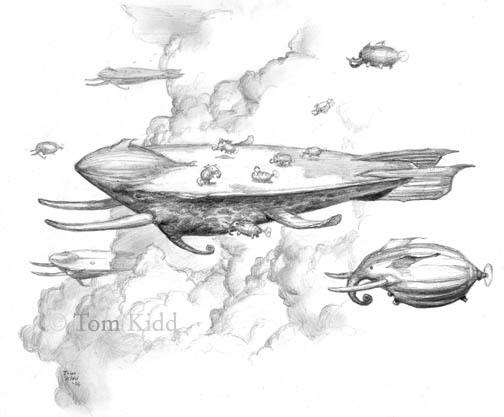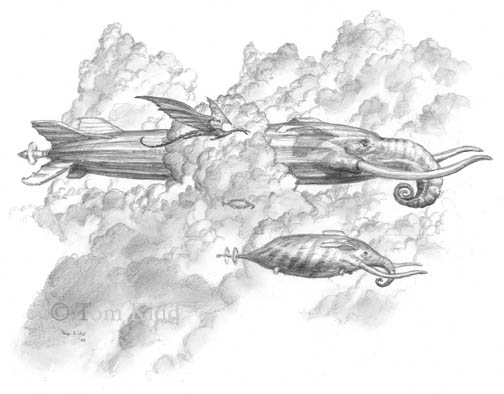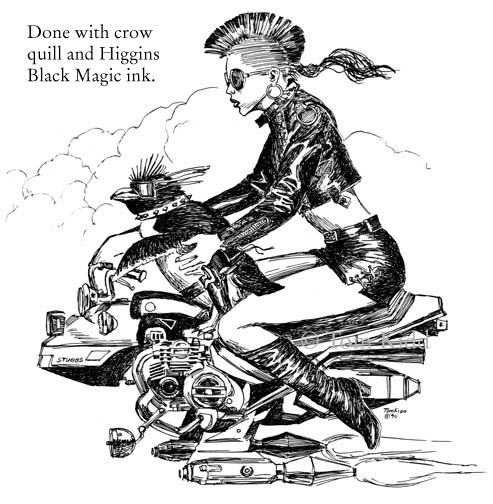
I only dabble in it. For me it’s a hobby. Pen & ink is rare today but it is not a forgotten art. Even though I’m writing about other artists all these pictures are mine. I’m sure you’ll see the influence. Links to the other artists’ works are in the text.
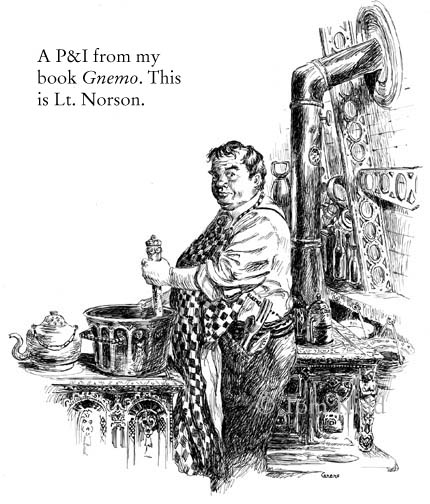
With all the options out there for making pictures why do anything with just black lines on a piece of paper? Heck, you can use your computer to make entire landscapes, people, machines and cityscapes all in 3D full color, animate it and put it to music.
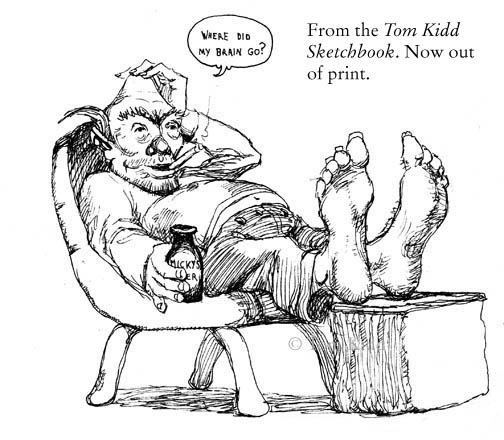
In contrast, how can manually putting black ink on a surface be useful? Especially when you can turn any picture into a line drawing with a simple filter.
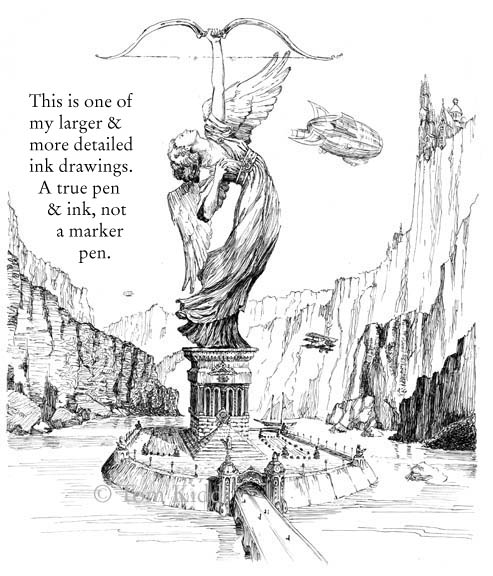
The answer to that is easy. Go look at the work of
Orson Lowell,
Charles Dana Gibson,
Joseph Clement Coll,
Daniel Vierge or
Norman Lindsay but that’s just the tip of the crow quill – a drop in the inkwell.
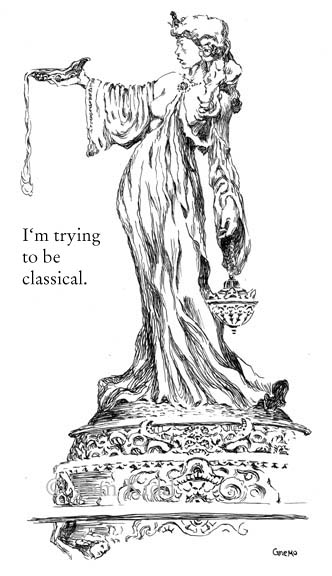
There are a number of great books on pen & ink art. I recommend
Jim Vadeboncoeur’s Black and White Images. Clearly low-tech in a skilled hand can accomplish true wonders.
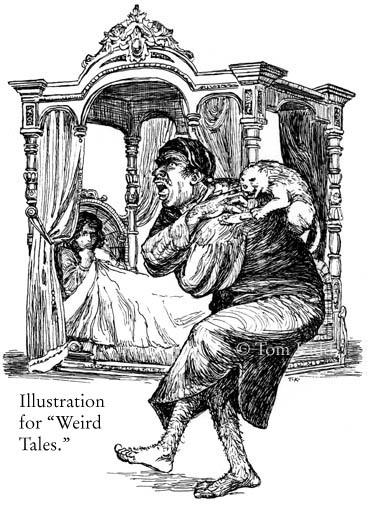
A surprising thing about ink lines is how the various textures they create can take the place of color. Franklin Booth is the best example of the great range pen & ink has. Compare his work the wild lines of Heinrich Kley. It shows you power and versatility of the line.
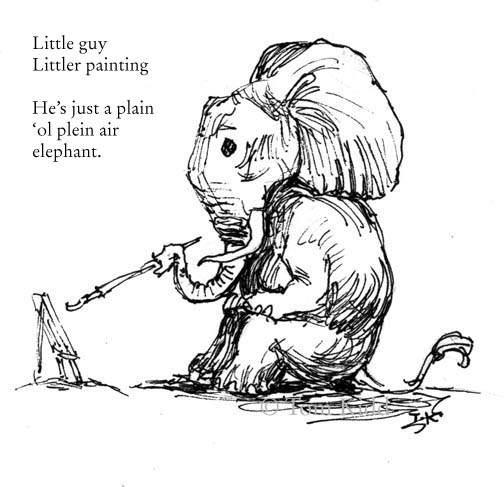
I was thinking about all of this the other day when I was goofing off. For no reason I was pulling out little idea sketches and using a Pigma pen to ink them. I’m using them plus a few older things to illustrate this essay.
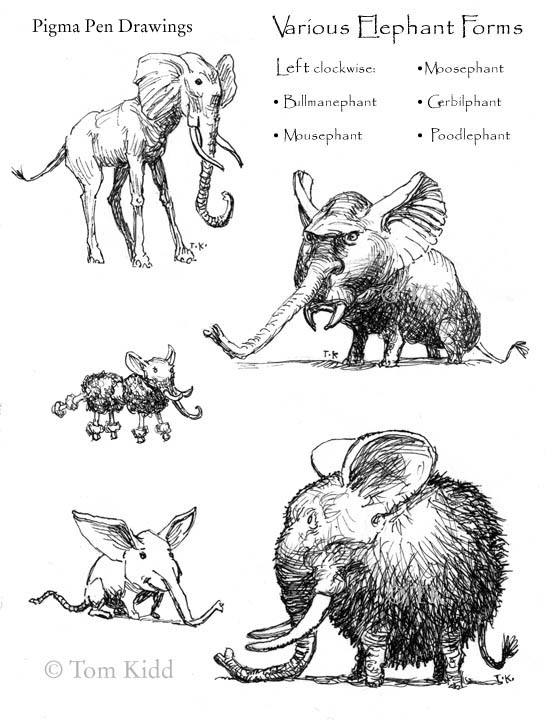
Every now and then I try to do a detailed pen & ink piece but it’s really just a pastime. A lot of the time I like to work directly in ink but I’m not a master at this either, so it’s a matter of keeping the ones that work and chucking the ones that don’t work.
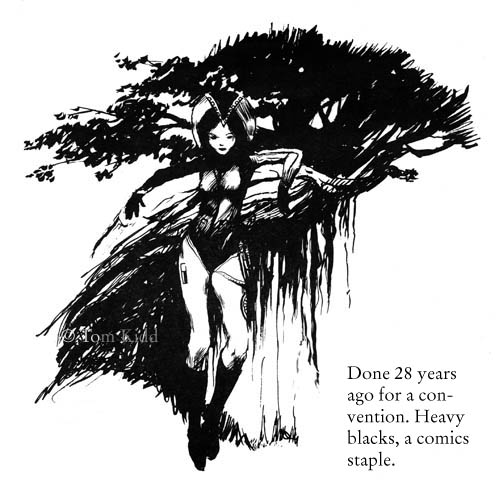 Roy G. Krenkel
Roy G. Krenkel did drawings directly in ink all the time. I have one of these little gems. It’s worth taking a look at his work. Most of what he did was for the fun of it and that’s the case with most of what you see here today.
